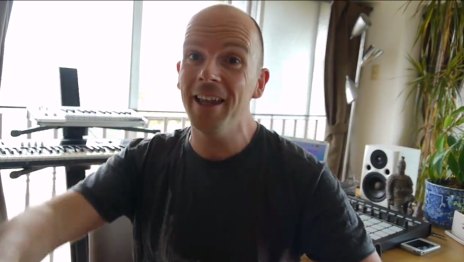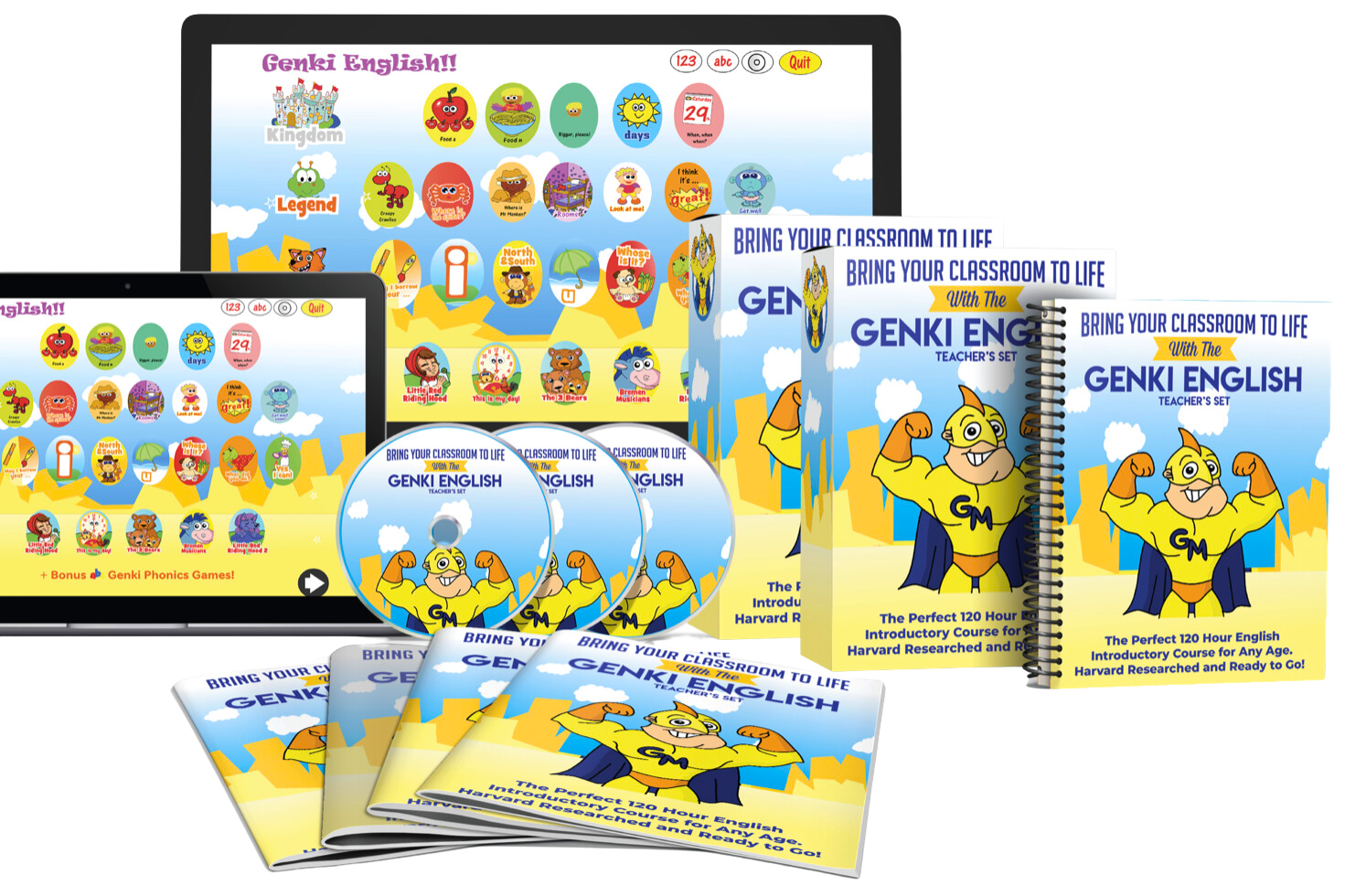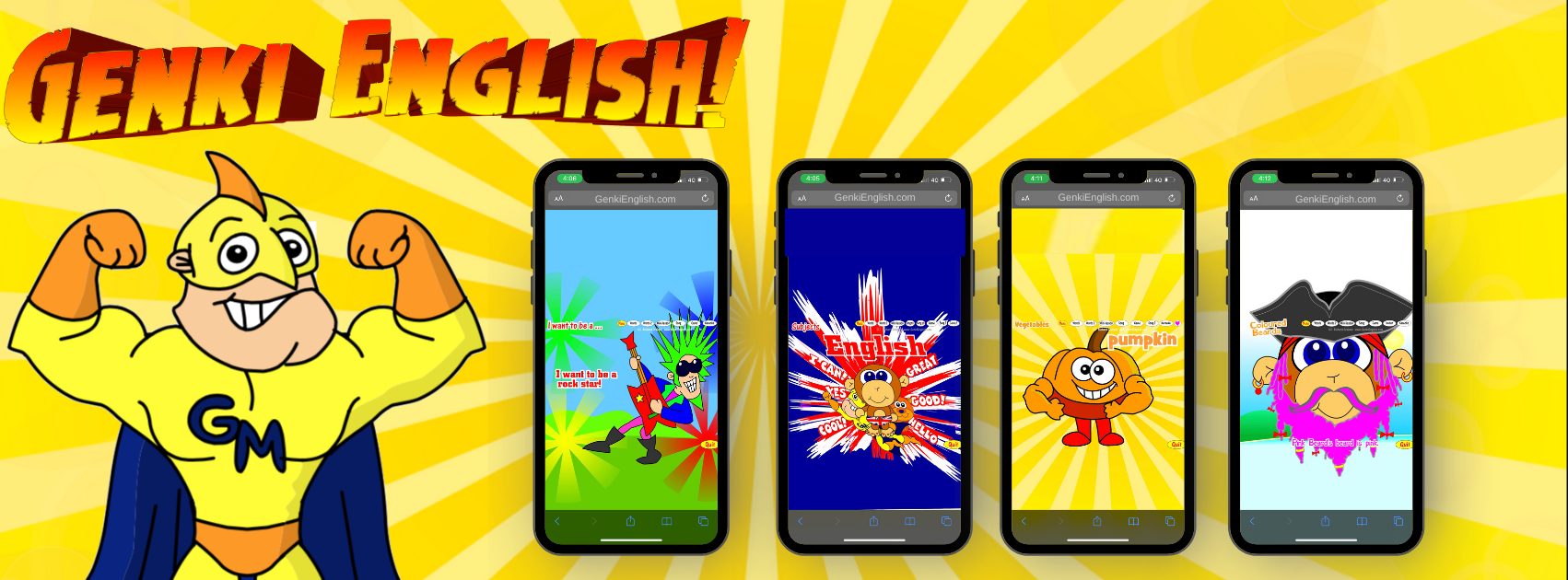
Lots of people have been asking me how I write the Genki English songs, so in the spirit of the season I thought I’d write this article on how you can write your own! 🙂
Where to start …..
There’s never “one way” to write a song, they all come about differently.
Sometimes lyrics are first, sometimes the music, or sometimes they come at the same time.
But let’s have a start with the lyrics.
Top Three Lyrics Ideas
When you’re writing Genki English songs obviously the lyrics are the main reason for having the song, because that’s the whole point of it, to help the kids remember the English you want to teach. So a couple of ideas to get inspiration:
- What are you teaching today? Do what I did in the beginning, just take the example sentences you’re teaching today (especially if it’s hard for the kids to remember!) and make it into verses and choruses. This is what I did with songs like What’s your name? and Left & Right, have you ever ….?
- What are the kids saying in the playground? When I’d exhausted my (at the time) rather short curriculum, I then started listening to what language the kids were using with each other e.g. Rock, paper, scissors, creepy crawlies
- What classroom English do you always use? This is a great one if you find the kids not always responding to the classroom English you want to use. Just make it into a song and use it as the base of your next lesson! For example I did this with the Disco Warm Up & I’m sorry songs.
And remember to keep everything in sentences.
What about the music?
I’ve got a bit of an advantage here in that I’ve been producing music for 26 years, and just this year Camper Shoes used one of my tracks in their advertising campaigns, so I’ve learnt a few tricks over that time.
But the key is that the most successful songs are always the simplest.
“Life is really simple, but we insist on making it complicated.” – Confucius
You don’t need fancy exotic chords or oodles of twiddly solos.
In fact many, many, many hit songs have been written with just three chords.
Yep, three.
So get over to Youtube, spend an hour or two teaching yourself three chords on the piano, guitar or garageband, stick to just three, play around with them over and over and start humming your melodies over the top.
Ninja Tip: *Everyone* has written a No.1 single at some point in their lives. Yes, even you! The difference between the pros and the ones you’ve never heard of? The pros get out of the shower and write it down. 🙂
Her Majesty the Melody …..
The melody, the “tune”, the bit you hum in the shower is the real key to a great song.
That’s the bit you remember, the bit that sticks in your head all day and the bit that drives you crazy.
(Please don’t send me hate mail when you can’t get a Genki English song our of your head, just imagine what it’s like for me singing them every day!!! 🙂 )
This is one reason why “chants” don’t work as well in the classroom as “songs”, chants have no melody so we just don’t remember them as well.
So keep playing around with your chords, and singing the lyrics over and over until something pops out that you think sounds quite nice.
Sometimes it takes days and days and days.
And sometimes something amazing pops out in 2 minutes.
Keep at it!
“Energy and persistence conquer all things.” – Benjamin Franklin
Record it on your phone.
Then the next day see if you remembered it correctly.
If you did, you might have a hit!
If not, well, if you can’t remember it then no one else will! 🙂
So keep at it! 🙂
But I’m not musical!!
Nonsense. This is one of those myths that have been put out by bad music teachers. 🙂
If you can hear the difference between the left most note on a piano (the one that goes “doooonnnnnnnn”) and the right most key (the one that sounds like a sparrow very quickly screeching down a blackboard), then you are not “tone deaf.”
Go on, give it a try, it’s pretty easy isn’t it!
From then on it’s just practice to be able to hear the ones in the middle.
But … here’s the thing, just like with only needing 3 chords to write a hit song, so only need 3 notes to write a hit melody! Just think of Frozen’s Let it go, it’s just a 3 note riff!
Ninja Tip: Try not to use “borrowed” melodies from other famous songs. If students already know the tune with different lyrics the song doesn’t work half as well for learning the English.
Be original, don’t be scared of being bold. – Ed Sheeren
Forming a whole song
3 might be the magic number, but in music it is 4.
So make sure you have your lyrics in sets of four, eight or sixteen lines.
Put a couple of rhymes in there and if you can make the examples form a story, that’s even better.
Words you forget. Stories you remember.
Very often textbooks choose their English on the technical point they are trying to teach and come out a bit stilted. So where you can, try and choose real life example sentences. As these are real sentences they will flow better and sound a lot smoother with the music.
Ninja Tip: Also don’t force the lyrics to the rhythm. I see this a lot in amateur songs, especially made up chants, where you try and cram in a whole sentence in the space of a couple of words. It sounds bad, and worse the kids won’t remember it. Instead edit the sentences to make them shorter or spread out the syllables like you would in a real song e.g. think of the long “wa” sound in the chorus of Abba’s “Waterloo”
The only “hard part” Production Tips
Then the only tricky part is the music production.
A lot of kids producers fall down on this because the music is very ….. hmmm, how can I say …. kiddy like? Very cheap and doesn’t have any energy.
If you do want to record it then make sure you capture all that energy and excitement in the recording.
I can’t count how many songs I’ve thrown away over the years because they didn’t quite work with the kids.
In fact the Superhero song took 6 years of remixing and re-working to get the production just right!
But ….
Now to be honest if you’re just performing this yourself for your own class, then it doesn’t matter.
You can easily bring the energy yourself.
Grab a guitar, the piano or even your iphone plugged into a speaker, and put the energy into the performance yourself with the kids.
Because you’re doing it “live” you’ll have all the energy and exciting of a live performance.
You’ll instinctively slow down, speed up, add tension, make mistakes, and generally have a lot of fun with it.
Warning: Performing live, even just in front of your own students can soon become very, very addictive! 🙂
So have a go!
You could choose the easy option of simply using my songs or even just sending me suggestions of songs you’d like me to write.
But why not give it a try yourself?
You’ll find it opens up a whole new world of possibilities, can make even the most impossible English really easy to remember, and, if you get the energy just right, it can turn around even the toughest class!
And of course be sure to share all your great works with us!
Be genki,
Richard
P.S. This post is a little different from the regular straight teaching ones. If you liked it, do let me know in the comments and I’ll see if I can write some more on different topics.
P.P.S. The winner of last month’s comment competition was ……… Angie. If you’d like a free Genki English single volume download of your choice, get commenting on the blog now, each month I pick one comment at random to win the prize. Next month it could be you! 🙂




That was a very interesting article to read. Thanks for sharing your knowledge. Inspiration can come to you at any time, even in your sleep! When you hear a tune in your head it’s good to write it down if you can (I’m a bit lazy like that!). Thanks again for all the hard work you’ve put into those catchy tunes!
Just this morning I was thinking (no lies), how the Genki Songs are the best and how ALL the children that I have ever taught, love the Genki lessons! The Genki lessons just don’t stop motivating the Kids. It’s all I use now – I’m addicted to Genki!!
About the Songs, they just fascinate me, more importantly, however, they fascinate the Kids.
As I know a couple of chords, I might even give it a go myself. What fun!!
Great article. Both systems we use at the school I work for contain songs. The little kid system (DDDragon) has a song for every unit on the DVD, though only every other song is original and relevant to the English taught in that unit. And then the original songs are only original insofar as they took some of the vocabulary words, maybe the grammar, and stuffed it on top of a common tune like ABC, London Bridge, Twinkle Twinkle, Happy Birthday. Like you said, this isn’t as effective being over another tune kids already know and then the words are often crammed in and don’t fit with the rhythm and the songs are too difficult and unsingable then…not to mention the production value on the DVDs leaves A TON to be desired (especially when compared to Genki!)
The primary books we use (Hip Hip Hooray!) also have songs focused on the first lesson of every unit (thus no songs for the other two grammar and vocabulary points in each unit). The songs have original tunes but again often do a poor job of getting a catchy tune and a tune and rhythm that let the sentences flow nicely. Throw into that some bad registers and the songs just aren’t as catchy and maleable as Genki ones.
It would be really cool for teachers to make somes – even if just rough versions and they send them in to you for inclusion on future Genki software along with increased production value, graphics, etc. Of course, this presents legal issues but great collaboration!
Love these type of posts! Keep them coming. Thank you for sharing and encouraging us to be creative in our teaching. You are one-of-a-kind! 🙂
Great post. Thanks. I am learning how to play a ukulele and would love to play it with the Genki English songs. It would be awesome to know what chords to play.